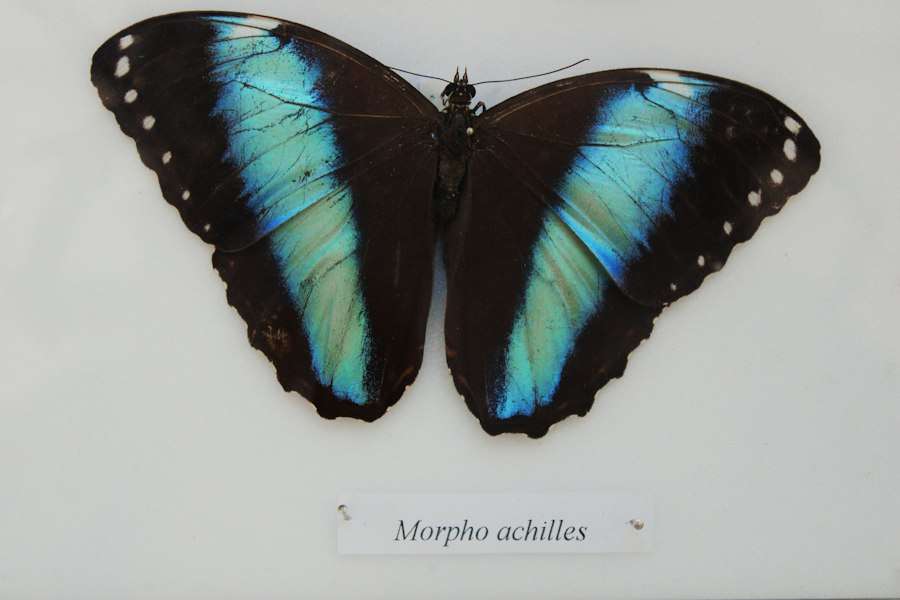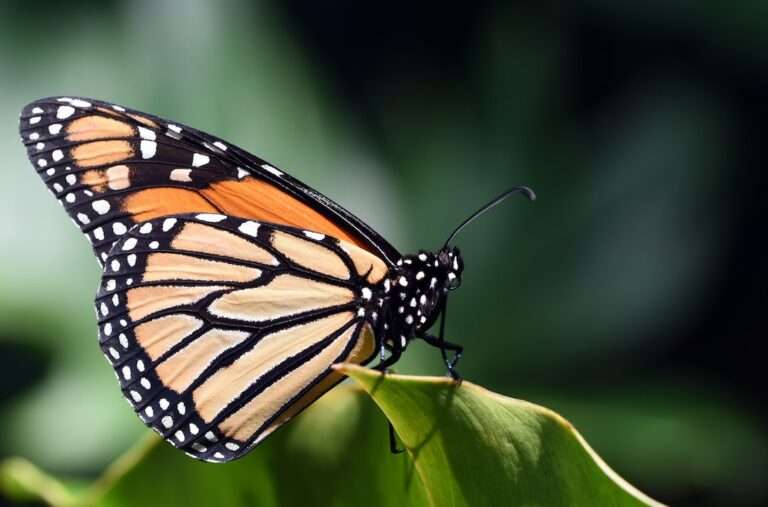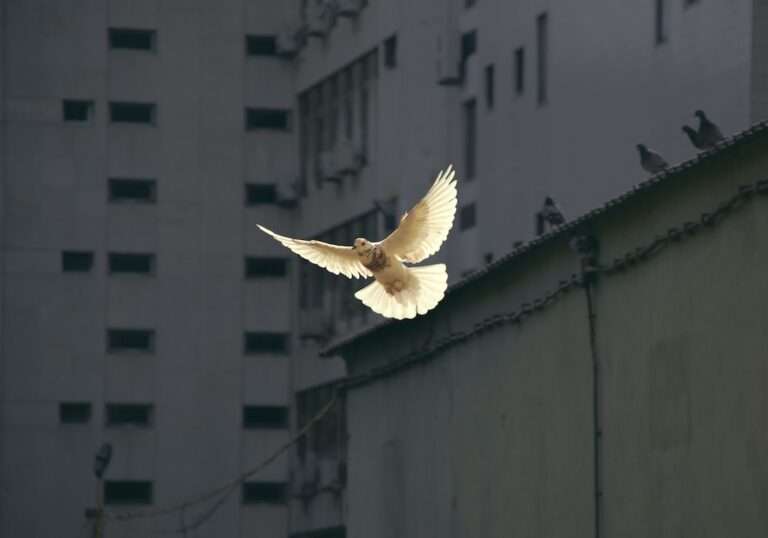The Majestic Monarch: Exploring the Symbolism Behind the Butterfly’s Transformation

The metamorphosis of a butterfly is a fascinating process that has captivated the attention of scientists, artists, and nature enthusiasts for centuries. From a tiny egg to a crawling caterpillar, and finally to a majestic butterfly, this transformation is a symbol of beauty, growth, and renewal. Studying the life cycle of a butterfly not only provides valuable insights into the natural world but also offers profound lessons about transformation and the human experience.
Key Takeaways
- A butterfly undergoes a metamorphosis from a caterpillar to a majestic monarch.
- The butterfly’s transformation symbolizes change and growth in life.
- The butterfly’s journey holds spiritual significance in many cultures.
- Butterflies represent renewal and rebirth in various societies.
- Butterflies play a crucial role in ecology and environmental conservation efforts.
The Metamorphosis of a Butterfly: From Caterpillar to Majestic Monarch
The life cycle of a butterfly consists of four distinct stages: egg, larva (caterpillar), pupa (chrysalis), and adult. Each stage plays a crucial role in the butterfly’s development and transformation.
The journey begins with a tiny egg laid by an adult female butterfly on the underside of a leaf. Within days, the egg hatches into a caterpillar, which spends its time voraciously eating and growing. As the caterpillar grows, it sheds its skin multiple times in a process called molting. This allows it to accommodate its increasing size.
After reaching its full size, the caterpillar enters the pupa stage. It attaches itself to a leaf or twig and forms a chrysalis around its body. Inside the chrysalis, the caterpillar undergoes a remarkable transformation known as metamorphosis. During this time, its body breaks down into a soupy substance, and from this liquid, a butterfly emerges.
Each stage in the butterfly’s life cycle is essential for its development. The egg provides protection and nourishment for the growing caterpillar. The caterpillar stage allows for rapid growth and accumulation of energy reserves needed for the next phase. The pupa stage is where the actual transformation takes place, as the caterpillar’s body is reorganized into that of a butterfly. Finally, the adult butterfly emerges, ready to fulfill its role in pollination and reproduction.
The Symbolism of Transformation in the Butterfly’s Life Cycle
The transformation of a caterpillar into a butterfly holds deep symbolism and can be applied to various aspects of human life. It represents the potential for growth, change, and personal transformation. Just as the caterpillar undergoes a profound metamorphosis, humans have the capacity to transform themselves and evolve into something greater.
The butterfly’s transformation can be seen as a metaphor for personal growth and self-discovery. It reminds us that change is not only possible but necessary for our development. Like the caterpillar shedding its old skin, we must let go of old beliefs, habits, and patterns that no longer serve us in order to grow and transform.
This theme of transformation is prevalent in literature and art. In Franz Kafka’s novella “The Metamorphosis,” the protagonist wakes up one morning to find himself transformed into a giant insect. This physical transformation serves as a metaphor for his alienation from society and his struggle to find meaning in his life.
The Spiritual Significance of the Butterfly’s Journey
| Topic | Metric |
|---|---|
| Symbolism | The butterfly represents transformation, change, and rebirth. |
| Religion | In Christianity, the butterfly is a symbol of resurrection and new life. |
| Mythology | In Greek mythology, Psyche (meaning “soul”) is represented by a butterfly. |
| Culture | In Native American culture, the butterfly is seen as a messenger between the living and the dead. |
| Psychology | The butterfly’s journey can represent personal growth and self-discovery. |
In addition to its symbolic significance, the butterfly’s journey also holds spiritual meaning in many cultures and belief systems. The butterfly is often seen as a symbol of spiritual growth, enlightenment, and transcendence.
The butterfly’s journey from egg to caterpillar to chrysalis to butterfly mirrors the stages of the human spiritual journey. It represents the process of shedding old beliefs and attachments, undergoing inner transformation, and ultimately emerging as a more enlightened being.
In Native American cultures, the butterfly is seen as a messenger between the physical and spiritual realms. It is believed that when a butterfly crosses your path, it is a sign that you are on the right path spiritually.
The Butterfly as a Symbol of Renewal and Rebirth
The butterfly’s transformation also symbolizes renewal and rebirth. The caterpillar’s journey from a lowly crawling creature to a graceful butterfly represents the possibility of starting anew and leaving behind the past.
In many cultures, the butterfly is associated with the concept of rebirth and the afterlife. In ancient Egyptian mythology, the butterfly was seen as a symbol of the soul’s journey after death. It was believed that the soul would transform into a butterfly and fly away to the afterlife.
The Cultural Significance of Butterflies in Different Societies

Butterflies hold cultural significance in various societies around the world. In many cultures, they are seen as symbols of beauty, transformation, and good luck.
In Chinese culture, butterflies are associated with love and romance. They are often depicted in art and literature as symbols of marital bliss and happiness. In Japanese culture, butterflies are seen as symbols of joy and longevity.
The Butterfly’s Role in Ecology and Environmental Conservation
Butterflies play a crucial role in the ecosystem as pollinators. They help to transfer pollen from one flower to another, enabling plants to reproduce. Without butterflies and other pollinators, many plant species would not be able to reproduce, leading to a decline in biodiversity.
Unfortunately, butterflies face numerous threats to their survival. Habitat loss, climate change, pesticide use, and pollution are all contributing factors to the decline in butterfly populations worldwide.
Conservation efforts are underway to protect butterfly habitats and promote their conservation. These efforts include creating butterfly gardens, planting native host plants for caterpillars, and raising awareness about the importance of butterflies in the ecosystem.
The Scientific Study of Butterfly Migration Patterns
Butterfly migration is another fascinating aspect of their biology that has captured the attention of scientists. Many butterfly species undertake long-distance migrations, traveling thousands of miles to reach their breeding grounds.
Studying butterfly migration patterns provides valuable insights into their behavior, physiology, and ecology. It helps scientists understand how butterflies navigate over long distances, how they find suitable breeding sites, and how they adapt to changing environmental conditions.
The Butterfly’s Beauty and Aesthetics in Art and Literature
The butterfly’s beauty has long been a subject of inspiration for artists and writers. Its vibrant colors, delicate wings, and graceful flight have made it a popular motif in various art forms.
In literature, the butterfly is often used as a symbol of beauty, fragility, and transformation. It represents the fleeting nature of life and the ephemeral beauty of the natural world.
The Butterfly’s Place in Mythology and Folklore
Butterflies have a rich mythology and folklore associated with them in many cultures. In Greek mythology, Psyche, the goddess of the soul, is often depicted with butterfly wings. The butterfly is seen as a symbol of the soul’s immortality and its ability to transcend the physical world.
In Native American folklore, butterflies are seen as messengers from the spirit world. They are believed to carry messages from ancestors or spirits and are often seen as symbols of protection and guidance.
The Butterfly’s Impact on Human Emotions and Mental Health
The butterfly has a profound impact on human emotions and mental health. Its beauty and grace evoke feelings of joy, wonder, and awe. Observing butterflies in their natural habitat can be a calming and meditative experience, helping to reduce stress and anxiety.
Butterflies have also been used in therapy and mental health treatment. Butterfly gardens and butterfly releases are often incorporated into therapeutic programs to promote relaxation, mindfulness, and emotional healing.
The metamorphosis of a butterfly is not only a remarkable biological process but also holds deep symbolic meaning in various aspects of human life. From personal transformation to spiritual growth, the butterfly’s journey offers valuable lessons about change, renewal, and the interconnectedness of all living beings.
It is crucial to protect the butterfly’s habitat and conserve its population to ensure its survival and the continuation of its symbolic significance. By understanding and appreciating the beauty and importance of butterflies, we can foster a deeper connection with nature and promote a more sustainable and harmonious world.
If you’re interested in exploring more symbolism, you might find the article on the symbolism of the moon fascinating. The moon has long been associated with various meanings and interpretations across different cultures and religions. From representing femininity and intuition to cycles of life and emotions, the moon holds a significant place in symbolism. To delve deeper into this topic, check out this article on what does the moon symbolize.
FAQs
What is the Monarch Butterfly Symbolism?
The Monarch Butterfly Symbolism refers to the cultural and spiritual significance of the Monarch butterfly in various societies and belief systems around the world.
What does the Monarch Butterfly Symbolize?
The Monarch Butterfly Symbolizes transformation, change, rebirth, and renewal. It is also associated with beauty, grace, and freedom.
What cultures have a significant association with the Monarch Butterfly Symbolism?
The Monarch Butterfly Symbolism is significant in various cultures, including Native American, Mexican, Chinese, and Japanese cultures.
What is the significance of the Monarch Butterfly in Native American culture?
In Native American culture, the Monarch Butterfly is considered a symbol of hope, change, and new beginnings. It is also believed to bring good luck and prosperity.
What is the significance of the Monarch Butterfly in Mexican culture?
In Mexican culture, the Monarch Butterfly is associated with the Day of the Dead festival, where it is believed that the butterflies carry the souls of the departed to the afterlife.
What is the significance of the Monarch Butterfly in Chinese culture?
In Chinese culture, the Monarch Butterfly is associated with love and marriage. It is believed that if a butterfly enters your home, it is a sign of good luck and that you will soon find love.
What is the significance of the Monarch Butterfly in Japanese culture?
In Japanese culture, the Monarch Butterfly is associated with the Samurai warrior class. It is believed that the butterfly represents the soul of a fallen warrior and that it brings good luck and protection to the living.





